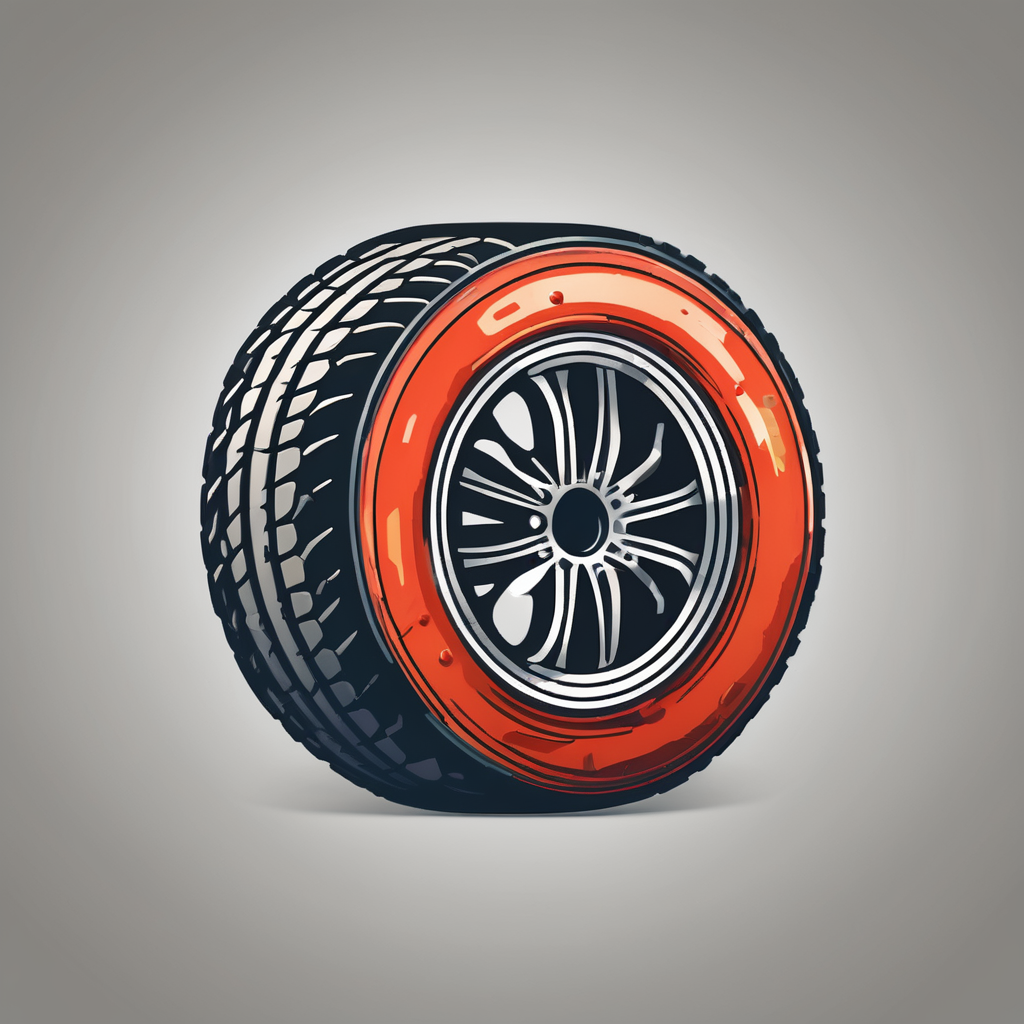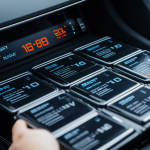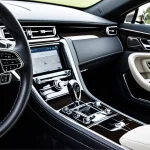Understanding the Benefits of Modern Tech Upgrades
Incorporating modern tech upgrades into classic cars can significantly enhance their performance and usability, aligning them with contemporary standards while maintaining their timeless charm. Improved performance and handling through technological enhancements is one standout benefit. For instance, introducing electronic management systems improves engine efficiency and response times, translating into smoother rides and better fuel consumption, amplifying both power and performance.
Safety features are another crucial area where tech upgrades shine. By integrating modern braking systems and advanced suspension, classic cars achieve significantly superior control and stability, increasing passenger safety. Furthermore, modern seat belts and airbags can be seamlessly incorporated to provide an additional layer of protection for all occupants.
Also read : Revamp Your Car’s Infotainment System: The Ultimate Guide to Safe Upgrades Following UK Road Regulations
Lastly, modern tech upgrades also contribute to increased usability of classic cars. Advanced infotainment systems with navigation capabilities, updated audio systems, and climate control systems can be installed to enhance the comfort and convenience of the driving experience. These additions ensure that drivers enjoy the comforts and conveniences associated with modern vehicles while retaining their classic aesthetic appeal.
Key Technologies for Classic Car Upgrades
Modern technology can breathe new life into classic cars, preserving their timeless charm while enhancing their functionality. Here’s how specific technologies can transform these beloved vehicles.
Have you seen this : Unlock Superior Performance: The Complete Guide to the Advantages of Synthetic Oil for High-Mileage Vehicles in the UK
Engine and Performance Enhancements
Upgrading a classic car’s engine can significantly boost its performance. Modern engine options offer greater efficiency, reliability, and power, aligning these vintage vehicles with today’s standards. Incorporating performance tuning and electronic management systems further enhances this transformation. Such systems optimize fuel efficiency and engine responsiveness, providing a smoother driving experience.
Safety Enhancements
Classic cars can be made safer through technological advancements. Installing modern braking systems ensures better control and responsiveness, crucial for today’s driving conditions. Enhanced suspension systems improve ride stability, offering a more comfortable ride. Upgrading seat belts and adding airbags not only modernizes the car’s safety features but also protects passengers without detracting from the car’s classic aesthetic.
Infotainment and Comfort Features
For those seeking modern conveniences, integrating updated audio systems and navigation systems can upgrade the driving experience significantly. These features provide entertainment and easy navigation, enhancing the car’s usability without compromising its vintage appeal. Revamping climate control systems also contributes to a comfortable interior, ensuring that drivers enjoy comfort as much as style on every journey.
Compatibility and Sourcing Parts
Navigating the world of classic car upgrades requires a keen understanding of parts compatibility. Given the diverse array of classic car models, ensuring that the parts you source are compatible with your specific make and model is paramount. This involves thorough research into the original specifications of your vehicle and identifying modern components that align with these specifications.
When it comes to sourcing materials, selecting recommended suppliers who specialize in classic car components is advisable. These suppliers often have a reputation for quality and can provide assurance of part authenticity and fit. Furthermore, exploring online resources can be highly beneficial. Websites dedicated to classic cars often feature forums and community reviews discussing parts and suppliers, helping you make informed sourcing decisions.
To ensure you’re getting high-quality components, it’s crucial to verify the part quality and the supplier’s reputation. This can involve checking customer reviews, seeking recommendations from classic car enthusiast groups, and asking for guarantees or return policies. By taking these steps, you safeguard your investment and enhance your vehicle with components that harmonize both functionally and aesthetically.
Compliance with UK Regulations
Navigating the world of classic car upgrades requires familiarity with UK regulations to ensure legal compliance. This section will explore what classic car owners need to know, from specific rules affecting vehicle upgrades to important documentation and testing procedures.
Understanding Specific Regulations
In the UK, regulations for vintage vehicles can differ significantly from those applicable to modernized classic cars. To remain compliant, it’s essential to understand how these differences impact your planned upgrades. For instance, while engine enhancements may be permissible, they should not compromise the vehicle’s classification as a historic vehicle.
Documentation and Testing
When you modify any aspect of a classic car, keeping accurate and thorough documentation is key. This paperwork includes proof of parts used, supplier details, and modifications made. It is also important to undergo proper testing procedures to ensure the vehicle adheres to safety and emissions standards. Successfully navigating these steps ensures that your vehicle remains compliant and roadworthy post-upgrade.
Insurance Implications
Finally, any modifications can impact your classic car insurance policies. It’s crucial to communicate all upgrades to your insurer to ensure your coverage remains valid and comprehensive. Failure to do so might result in insufficient coverage in the event of an accident or claim. Properly documented and reported modifications can facilitate more accurate and fair policy adjustments.
Step-by-Step Guide to Upgrading Your Classic Car
Upgrading a classic car can be an exciting journey, transforming a beloved vehicle while maintaining its timeless charm. Here’s how you can embark on this path with confidence.
Detailed Overview of the Upgrade Planning Process
Before any installation, it’s vital to have a well-defined plan. Start by identifying the specific upgrades you wish to incorporate—whether they involve performance improvements, safety enhancements, or modern conveniences. Prioritize these based on your budget and the car’s requirements, considering how each will affect the vehicle’s overall aesthetics and functionality.
Step-by-Step Instructions for DIY Enthusiasts
For those who enjoy hands-on projects, converting your car with modern parts can be both rewarding and economical. Begin with research to ensure the compatibility of the parts with your classic car model. Use manuals or online guides tailored to your car’s make and model for reference during the installation. Remember to set up a safe workspace and keep all necessary tools at hand for a smooth process.
Identifying When to Seek Professional Help for Installations
While some modifications can be handled as DIY projects, certain upgrades—like advanced electronics or intricate mechanical changes—may require professional expertise. Attempting complex tasks without the proper knowledge can lead to costly mistakes. Therefore, recognizing when to call professionals is crucial. Consulting experts ensures that installations are performed correctly and safely, preserving both the integrity and value of your classic vehicle.
Case Studies and Real-Life Examples
Embarking on a journey to enhance a classic car with modern parts can be truly transformative, as evidenced by numerous inspiring success stories. Each case provides valuable insights into the nuances of classic car modernization, showcasing not only stellar outcomes but also the practical challenges navigated along the way.
Inspiring Transformations: Stories from Owner Experiences
Consider the tale of a 1967 Mustang owner who embraced a comprehensive upgrade: modern brakes, enhanced engine tuning, and an advanced infotainment setup were some key choices. This not only boosted the vehicle’s performance improvements but also maintained its iconic allure. For this owner, the most rewarding part was achieving the ideal balance between authentic vintage charm and modern-day convenience.
Another noteworthy example is of a Jaguar E-Type owner who overcame extensive rust and limited parts compatibility. By sourcing professional craftsmanship paired with modern tech solutions, they achieved an impressive revival that honored the car’s heritage while incorporating contemporary enhancing classic cars methods.
Analyzing Challenges and Triumphs
These stories highlight the common hurdles of sourcing and fitting parts tailored to classic models. An evident challenge is identifying compatible parts; however, leveraging expert forums and clubs has proven invaluable in this pursuit. These resources provide a network of support, offering advice on reputable suppliers and authentic components crucial for a seamless upgrade journey.
The achievement of preserving the classic aesthetics while achieving performance improvements is a triumph shared by many. It involves strategic decision-making—often, a phased upgrade approach allows owners to manage both budget and objective efficiently. The patience and attention to detail ultimately pay off when the rejuvenated vehicle hits the road, offering both heritage beauty and modern reliability.
Each case study reinforces that the journey of enhancing a classic car is as rewarding as it is challenging. With the right resources, knowledge, and community support, classic car owners can successfully navigate the path of modernization, ensuring that their beloved vehicles continue to impress onlookers and satisfy their passion for years to come.
Cost Considerations for Modern Upgrades
Transforming a classic car with modern upgrades can be a costly endeavor, demanding thoughtful financial planning. Here’s what you need to know about estimating costs and budgeting for such enhancements.
Estimated Upgrade Costs
Upgrading a classic car varies widely in terms of expenses. Performance improvements, like modern engine options, might require significant investment due to their complexity and the quality of components involved. Safety enhancements, such as new braking systems and airbags, are essential but can also add to the total cost. It’s crucial to consider the balance between cost and the value added through these modifications.
Budgeting Strategies for Phased Upgrades
To manage expenses, many enthusiasts opt for a phased upgrade approach. This strategy allows you to spread out costs and tackle each project sequentially, focusing on components that most urgently need modernization. Prioritizing upgrades based on necessity and potential impact helps in maintaining financial sanity while gradually improving the vehicle.
Potential Return on Investment
Investing in modernizing classic cars can increase their value, offering potential returns. Enhanced performance and safety features make the vehicle more appealing to potential buyers, boosting its market price. While the primary motivation might be personal enjoyment and satisfaction, the financial benefits can be a rewarding side effect. Balancing personal desires with market trends ensures that your investment pays off while preserving the classic charm.
Resources for Classic Car Owners
Navigating the world of enhancing classic cars with modern parts can be a complex journey, but having access to the right resource guide can make the process smoother and more enjoyable. Classic car enthusiasts will find invaluable support through various recommended avenues.
Recommended Books, Websites, and Forums
An array of materials is available to support those interested in classic car community enhancement projects. Books that delve into the technical aspects and historical significance of classic cars serve as essential resources for enthusiasts looking to deepen their knowledge. Websites dedicated to classic car modernization, such as forums, are perfect places for owners to meet like-minded individuals and share advice. Here, you can find discussions on modern parts, troubleshooting tips, and personal experiences, offering a wealth of information and accessibility.
Clubs and Organizations for Enthusiasts
Joining clubs and organizations tailored to classic car owners provides a chance to network and participate in events that celebrate these timeless vehicles. In the UK, several clubs organize regular meet-ups and shows, offering opportunities to display successful upgrades and exchange creative ideas. Through membership, enthusiasts are often granted access to rare resources, parts catalogs, and experienced professionals who can guide complex projects.
Access to Professional Services and Consultancy
When faced with intricate upgrades, reaching out to experts specializing in enhancing classic cars is advisable. These professionals offer consultancy services that help in planning, sourcing parts, and executing modifications correctly. By connecting with seasoned experts, you gain the advantage of their ensuring that every detail of your modernization aligns with both your vision and the classic charm of the vehicle.








